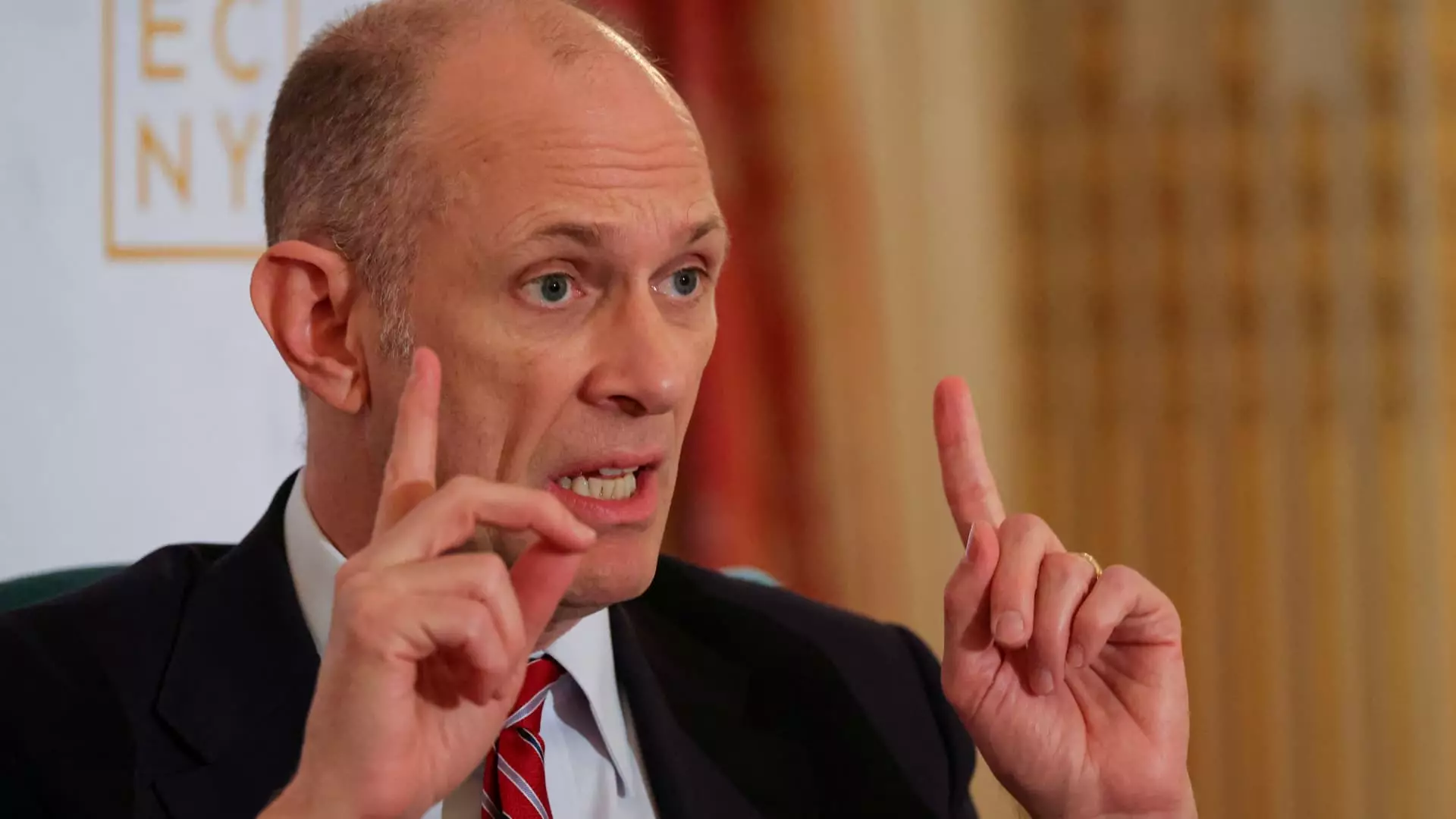In a world where economic stability is a coveted ideal, it seems every decision taken by those in power has the potential to turn the wheels of the economy in unexpected and often troubling directions. The recent comments from Chicago Federal Reserve President Austan Goolsbee are a stark reminder of how President Donald Trump’s aggressive tariff threats cast shadows over our economic landscape. To describe Trump’s actions as reckless would be an understatement, as these initiatives not only complicate fiscal policy but also put the central banking system in a precarious position. The delicate balance of managing interest rates, inflation, and employment is now threatened by the unpredictable nature of such tariffs, creating an anxious atmosphere for economists and policymakers alike.
Goolsbee’s remarks about needing to wait for clarity before making adjustments to interest rates reflect a deep-seated anxiety within the Federal Reserve. When he states, “Everything’s always on the table. But I feel like the bar for me is a little higher for action,” it becomes evident that the current climate favors a cautious approach. The ever-shifting trade policies initiated by the Trump administration carry with them a potential for stagflation—a scenario that no economist looks forward to. With jobs at stake and price levels uncertain, the Fed’s mandate to ensure stable prices and full employment becomes tangled in a web of tariff-induced complications.
Trump’s Trade Bluster and Its Discontents
Speculation abounds over the fallout from Trump’s latest proposals, particularly the suggestion of imposing 50% tariffs on European Union products and a 25% tariff specifically on iPhones not made in America. While some may argue that consumers can endure a slightly pricier iPhone, the implications are much broader. The cost of living will rise, and families focusing on their budgets will feel the strain. It’s easy to dismiss the ripples caused by just one product, but in macroeconomic terms, such directives create an unsettling precedent. They call into question the overarching fiscal policy direction of the nation and leave average Americans wondering whether their jobs and financial security are positioned precariously on the edge of a tariff war.
If there is a silver lining in this chaotic landscape, it lies within Goolsbee’s hopeful outlook for long-term economic stability. Despite the alarming trade policies, he believes that the path could lead to growth within the upcoming 12 to 16 months. However, such optimism seems both fragile and naive in the face of current tariffs, which are aggressive and seemingly endless. What happens if these tariffs escalate or if retaliatory measures are taken by other countries? This uncertainty undermines Goolsbee’s optimistic projections and places both consumers and businesses in an increasingly tenuous position.
The Fed’s Balancing Act: A Higher Bar for Action
As the Federal Reserve approaches its next meeting on June 17-18, the stakes have never felt higher. With interest rates currently pegged between 4.25% and 4.50%, Goolsbee’s comments make it clear that the Fed is treading carefully. Markets are expecting a rate cut, but without a clear sense of how trade policies might shift in the coming months, it’s understandable why central bankers are hesitant to commit to a particular course of action. “I don’t like even mildly tying our hands,” Goolsbee states—not only expressing caution but also hinting at an awareness of the need for flexibility in an era of unpredictability.
The broader picture reveals a central bank caught between the hammer of fiscal policy and the anvil of international trade hostilities. The hope for a stable economic environment and consistent growth feels like a distant dream when daily updating news reflects new threats that could derail such progress. In an era where American jobs and economic prosperity become bargaining chips in tariff talks, the consequences of these policies will be felt by all layers of society. The prevailing atmosphere of uncertainty obstructs the road to a balanced economy and raises serious questions about the leadership steering these tumultuous waters.
In light of Goolsbee’s remarks, it is painfully clear: the economic landscape under Trump’s administration isn’t merely rocky; it’s a veritable quagmire of confusion, fear, and indecision. The time for decisive measures to stabilize trade and economy is now, lest we lose sight of the true fabric of an economy built on mutual cooperation and reciprocal growth.

